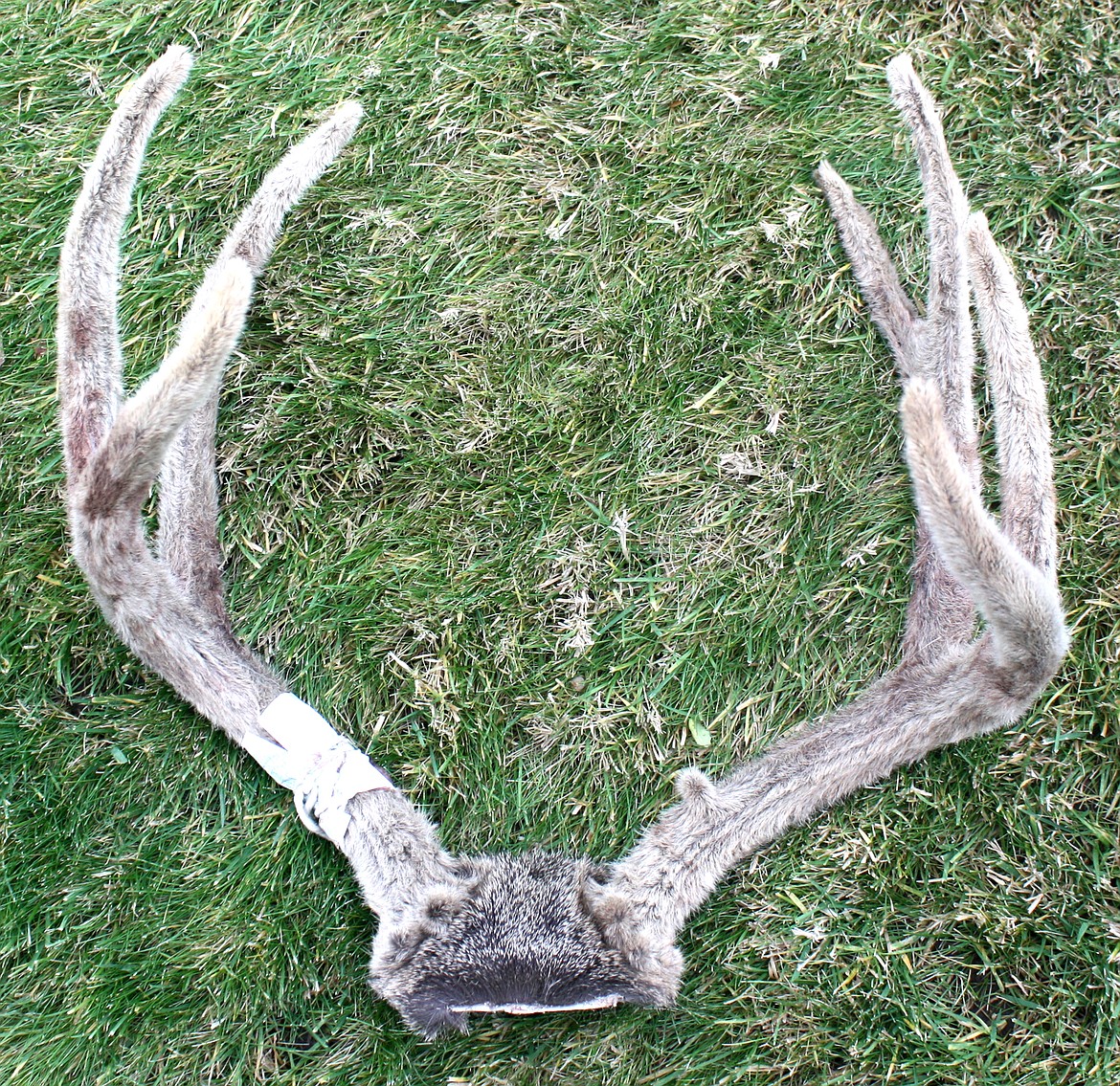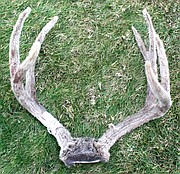Cactus bucks are a fact
Cactus bucks are a part of deer life, but not every deer’s life. What is a cactus buck? Basically, a cactus buck is a deer with antlers still in velvet with several points. Some of the points grow in irregular parts of the antlers resembling a cactus.
Members of the deer family (deer, elk, caribou and moose) have their antlers covered in a hairy velvet-like skin as the antlers grow. Eventually the antlers will develop into a bone-like material and the animal will rub the velvet off.
My 4- by 5-point buck this year would be considered a cactus buck. My hunting buddy shot a 2- by 3-point cactus buck from the same herd of six does.
We noticed each of the buck’s antlers had velvet and then we noticed neither of the bucks had testicles. This was my first cactus buck, but a second for my buddy.
The causes of making a normal deer into a cactus buck are more complicated than just saying the deer has velvet antlers. My research was conducted on the Internet and a call to Assistant District Wildlife Biologist Ella Rowan in Ephrata. In addition, Rowan sent me an article on Cactus Bucks by Wildlife Biologist Jim Heffelfinger from Arizona.
Much research has been conducted on the subject of these velvet-antlered animals. One main reason is hormones, mostly a lack of testosterone. Complicating the matter more is the fact antler growth is possible without testicles, because testosterone is produced in the adrenal gland also.
Although the animal will grow normal sized antlers, there will not be enough testosterone to close the blood vessels in the antlers, causing the velvet to dry up.
Normally members of the deer family grow new antlers each year, dropping them each year, also. Several of the velvet bucks will keep their antlers year after year and never drop them.
It is suspected genetics may play a small roll in producing cactus bucks, but this is still a bit of a mystery.
Age also plays a role in these odd-looking bucks. An old buck will not be able to produce an ample amount of testosterone. Therefore, his antlers will remain in velvet and they will not be shed.
Disease and tumors can cause an animal to produce less hormones, such as testosterone, which can show up as cactus bucks and even antlered does. Bluetongue, a hemorrhagic disease, can occur in the later stages of antler growth. Eastern Washington can experience outbreaks of bluetongue, depending upon the weather conditions in July and August.
A large number of white-tailed deer die of bluetongue, but rarely will mule deer get the disease.
“Mule deer rarely seem to develop symptoms and die from hemorrhagic viruses, such as bluetongue, the way white-tail deer do,” Rowan said.
My understanding was all deer died of the disease, but this new fact is well received. The next question involves the meat. Is it still good to eat?
“Not if the animal appears sick,” Rowan said. “Never eat the meat of a sick animal. But when hunting season rolls around, the meat is good to eat.”
There are more causes of cactus bucks. One is compounds in plants, which are hormone-like and the deer eat. Certain types of mold can reduce testicle size and, therefore, do not allow the proper amount of testosterone.
Another problem is when the testicles don’t descend into the scrotum, but remain in the body cavity. Still another is when the testicles descend, but remain small. Both of these conditions won’t produce the necessary hormones to produce normal antlers.
Deer with both male and female sex organs, hermaphrodites, may produce normal antlers. However, because of the estrogen, they may stay in velvet. There are also actual antlered does, having all of the normal female reproductive parts. They are able to reproduce, raise their young, but their antlers remain in velvet and are never shed. Can you imagine seeing two antlered deer mating?
Groups of cactus bucks have been observed over the years. Some of these groups have been investigated, but not all of the results are certain. The food animals eat was suspected in one group, but only after the area where the plants and deer live experienced an extended drought.
As mentioned, the causes of making a cactus buck are more complicated than just saying the deer has velvet antlers.
Some of the Cactus Buck Syndrome remains a mystery. Biologists continue to explore the condition, as time and money permit. It is one of those interesting occurrences in nature, which does not affect the environment or the animal in a detrimental way.





